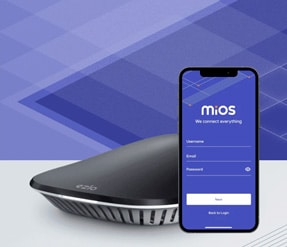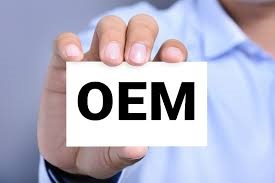Crucial Information About OEM Solutions
The evolution of OEM (Original Equipment Manufacturing) has brought some confusion in its definition. While it started as a rebranded product, the term has now split into two different definitions. For example, a company can use components built by another company to build a complete system-or a company can manufacture products and pass them off as their own.
Both definitions contain some element of Original Equipment Manufacturing. The difference in description outlines how this industry continues to develop over time. This article focuses on OEM solutions, what they are, and how the benefits they bring to various industries.
What are OEM Solutions and How do They Work?
OEM Solutions have hardware and software applications. A practical example is a software company that provides the operating system used by a hardware manufacturer. The end-user purchases an HP computer, but Microsoft builds the hardware. In principle, an OEM solution is a partnership between two distinct manufacturers.
OEM Solutions Meaning: The simple definition is a company that produces components marketed, rebranded, and sold by another company. You may have a Toyota car with some Subaru subcomponents within its systems. In other cases, you may have an Apple iPhone with some android sub-components within its assembly. These are examples of how modern companies collaborate to create a finished product.
The fundamental concept for OEM solutions is to create an assembly line that is effective but not cost-intensive. Companies use this technique to decrease production costs without compromising the quality of the final product.
Companies that rely on OEM solutions have discovered that large-scale manufacturing is quite costly. Using economies of scale, companies partner with other entities to reduce production time. It is an effective system that facilitates faster production at lower costs.
Benefits of OEM Manufacturing
On top of the above perks, OEM production has more benefits.
Improved Quality
The direct link to consumers means OEM solutions are better situated to understand client needs. This system creates a relationship that allows these companies to personalize consumer products with better components.
The production process in OEM manufacturing also involves designing consumer-oriented parts that improve functionality. Essentially, OEM companies have access to cheaper alternatives-this allows them to produce top-tier quality.
OEM is constantly improving product quality because its primary focus is customer satisfaction. Since they manufacture the final product, these companies don’t have the same pressures as aftermarket brands.
Faster Production
OEM solutions have more expansive stock options. This principle means they purchase straight from manufacturing companies. They also get finished components, with saves a lot of time. This direct purchasing also omits intermediaries notorious for complicating many production processes.
You are looking at a solution that establishes and maintains complete designs on a large scale. Unlike aftermarket production, limited by time, OEM systems produce faster, and their components satisfy market needs for much longer.
Competitive Costing
OEM manufacturers deal with mass production. This manufacturing process means that the pricing is more competitive due to economies of scale. Although these products roll out on a large scale, it does not compromise quality.OEM solutions are structures that offer and guarantee value for money.
You get zero downtime, longevity, and cost-efficiency. An OEM component is a finished product-this means no extra installation and running costs.
Quicker Support
Whether dealing with hardware or software components-there has to be guaranteed technical support. OEM companies give you superior engineering from industry-specific manufacturers. This feature translates to better technical support.
OEM companies are involved in the entire manufacturing process, from start to finish. The perk here is a better understanding of all the parts in the system. This expertise ensures that you are in good hands if you have any problem with the finished product.
In OEM production, there are very few concerns about substandard components. Companies rigorously test the finished product to ensure it meets and exceeds your expectations. The expertise involved in the process also ensures that you get faster support if you have a problem.
Pitfalls of Aftermarket Production
Although many aftermarket products function as effectively as OEM parts, you usually have to contend with diminished quality. These products have a rushed manufacturing process, and they only offer value for a short period.
This diminished quality varies depending on the industry. Software production may be affected, but car parts like aftermarket turbochargers function well. That said, stock production is still the best option.
Bottom Line – Original Equipment Manufacturing
OEM solutions offer high-performing and cost-effective options that operate better and improve management. Software systems provide a more fulfilling user experience and provide an all-in-one solution. While there are instances where aftermarket parts improve performance, we highly recommend you stick to OEM solutions.



















